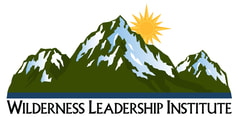Snowpack Summary (update) January 13, 2022
Posted by Allen Giernet @ 8:05am (this summary expires in 48 hours)
This summary applies to backcountry areas only.
The Bottom Line –
No overnight freezing and heavy cloud cover will bring an increasing chance of Wet Snow Avalanche activity today. Avalanche danger will increase through the day at all elevations especially lower elevations, as temperatures rise and the greenhouse effects of cloud cover loosen the snowpack. Watch for changes as you travel and avoid being on or under steep terrain above 35 degrees.
If you venture out please submit your observations to the avalanche center Submit Reports page.
Posted by Allen Giernet @ 8:05am (this summary expires in 48 hours)
This summary applies to backcountry areas only.
The Bottom Line –
No overnight freezing and heavy cloud cover will bring an increasing chance of Wet Snow Avalanche activity today. Avalanche danger will increase through the day at all elevations especially lower elevations, as temperatures rise and the greenhouse effects of cloud cover loosen the snowpack. Watch for changes as you travel and avoid being on or under steep terrain above 35 degrees.
If you venture out please submit your observations to the avalanche center Submit Reports page.
Problems

Loose Wet avalanches are the release of wet unconsolidated snow or slush. These avalanches typically occur within layers of wet snow near the surface of the snowpack, but they may quickly gouge into lower snowpack layers. Like Loose Dry Avalanches, they start at a point and entrain snow as they move downhill, forming a fan-shaped avalanche. Other names for loose-wet avalanches include point-release avalanches or sluffs. Loose Wet avalanches can trigger slab avalanches that break into deeper snow layers.
General Summary - Saved from 1-6-22 (expired)
We are currently in spring like conditions with a freeze thaw cycle. Our top concern will be Wet snow instability through the day. This problem will be most prominent on Southerly aspects E,SE,S,SW & W through the day. Any slopes that receive sun exposure will be suspect especially as the temperatures rise. Watch for signs of Wet snow instability near rock bands and outcroppings, Pinwheels and roller balls, sinking deeper into the snow as the day progresses to boot top depth are signs it’s time to rethink your plan. As clouds develop this afternoon the greenhouse effect will increase the the possibility for Wet Snow Avalanches. Get out early and get off early. We received a couple reports yesterday of Loose Wet Avalanches observed in the late afternoon of January 4. Early morning will bering a chance of fast and firm conditions especially on packed out trails with slide for life scenarios. The report of a deeply buried weak layer at the higher elevations on Northern aspects in the San Gabriel Mountains remains. We have limited data on this and do not know how widespread it is. Another concern is Deep Persistent Slab Avalanches Though unlikely and possibly in isolated areas this will produce large and likely fatal avalanches if triggered. Remember this possibility could be present in steep terrain and is not easy to identify without digging into the snow. Be cautious and and if in doubt make conservative decisions. Be wary of high elevation steep slopes over 30 degrees on northern aspects. We have very little first hand data from the San Bernardino and San Jacinto Mountains. Please send in reports from those areas. We do not see any overnight freezing in the forecast below 10,000’ until Sunday night. This will maintain the possibility for Wet Snow instability through the weekend.
Exercise caution on slopes over 30°. Always exercise caution when entering into winter mountain areas. Bring a Beacon Shovel and Probe and know how to use them. Travel with a partner and make conservative decisions.
We are currently in spring like conditions with a freeze thaw cycle. Our top concern will be Wet snow instability through the day. This problem will be most prominent on Southerly aspects E,SE,S,SW & W through the day. Any slopes that receive sun exposure will be suspect especially as the temperatures rise. Watch for signs of Wet snow instability near rock bands and outcroppings, Pinwheels and roller balls, sinking deeper into the snow as the day progresses to boot top depth are signs it’s time to rethink your plan. As clouds develop this afternoon the greenhouse effect will increase the the possibility for Wet Snow Avalanches. Get out early and get off early. We received a couple reports yesterday of Loose Wet Avalanches observed in the late afternoon of January 4. Early morning will bering a chance of fast and firm conditions especially on packed out trails with slide for life scenarios. The report of a deeply buried weak layer at the higher elevations on Northern aspects in the San Gabriel Mountains remains. We have limited data on this and do not know how widespread it is. Another concern is Deep Persistent Slab Avalanches Though unlikely and possibly in isolated areas this will produce large and likely fatal avalanches if triggered. Remember this possibility could be present in steep terrain and is not easy to identify without digging into the snow. Be cautious and and if in doubt make conservative decisions. Be wary of high elevation steep slopes over 30 degrees on northern aspects. We have very little first hand data from the San Bernardino and San Jacinto Mountains. Please send in reports from those areas. We do not see any overnight freezing in the forecast below 10,000’ until Sunday night. This will maintain the possibility for Wet Snow instability through the weekend.
Exercise caution on slopes over 30°. Always exercise caution when entering into winter mountain areas. Bring a Beacon Shovel and Probe and know how to use them. Travel with a partner and make conservative decisions.
Hint: for historical weather forecast data use our facebook page as all posts are there on a running timeline.
For more details check each areas forecast and weather stations for most current information.
Click here for this Season's Snow Pack Summaries
To better understand the challenges and potential variability over the large area we are producing information for please read our Snowpack Summary - Format and Limitations
Disclaimer:
This Bulletin is designed to generally describe conditions where local variations always occur. Travelers are advised to exercise caution and make slope specific evaluations. As always, please treat this bulletin with appropriately guarded skepticism and make your own assessments. Help to provide more information to the community by reporting your observations
This Bulletin is designed to generally describe conditions where local variations always occur. Travelers are advised to exercise caution and make slope specific evaluations. As always, please treat this bulletin with appropriately guarded skepticism and make your own assessments. Help to provide more information to the community by reporting your observations
General Caution
You should always use safe terrain management and carry avalanche rescue equipment in the backcountry. Most avalanches are triggered by someone in the party or the victim. Practice with your rescue gear often and be prepared should the worst happen. Though we do not have an avalanche forecast center in this area as of yet, the information posted and shared here as well as the resources available on this site will help to make informed decisions for your backcountry travels. Use avalanche forecasts in your travels wherever available and be aware that avalanche ratings are general information. Elevation, location, geographic variability’s, slope aspect and angle all have effects on the particular area you travel in. This is only one piece of the information you should use in your decision making process. There is no substitute for avalanche education, for more resources and information as well as education please refer to our resources page.
You should always use safe terrain management and carry avalanche rescue equipment in the backcountry. Most avalanches are triggered by someone in the party or the victim. Practice with your rescue gear often and be prepared should the worst happen. Though we do not have an avalanche forecast center in this area as of yet, the information posted and shared here as well as the resources available on this site will help to make informed decisions for your backcountry travels. Use avalanche forecasts in your travels wherever available and be aware that avalanche ratings are general information. Elevation, location, geographic variability’s, slope aspect and angle all have effects on the particular area you travel in. This is only one piece of the information you should use in your decision making process. There is no substitute for avalanche education, for more resources and information as well as education please refer to our resources page.




















